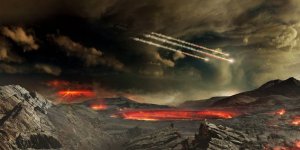| News / Science News |
Scientists discover a new way volcanoes form
Geoscientists have discovered the first direct evidence that material from deep within Earth's mantle transition zone - a layer rich in water, crystals and melted rock - can percolate to the surface to form volcanoes.

Geologists have found a new way volcanoes form. Photo: Wendy Kenigsberg/Clive Howard, Cornell University
Researchers have long known that volcanoes form when tectonic plates converge, or as a result of mantle plumes that rise from the core-mantle boundary to make hotspots at Earth's crust.
But finding that material from the mantle's transition zone - some 250 to 400 miles beneath our planet's crust - can cause volcanoes to form is new to geologists.
"We found a new way to make volcanoes," says geologist Esteban Gazel of Cornell University. "This is the first time we've found a clear indication from the transition zone deep in the Earth's mantle that volcanoes can form this way."
About 30 million years ago, a disturbance in the transition zone caused an upwelling of magma material to rise to the surface, forming a now-dormant volcano under the Atlantic Ocean, then forming Bermuda. "We were expecting our data to show that the volcano was a mantle plume formation - an upwelling from the deeper mantle - just like it is in Hawaii," Gazel said.
The scientists say that the research offers a new connection between the transition zone layer and volcanoes on the surface of Earth. (NSF)
YOU MAY ALSO LIKE



